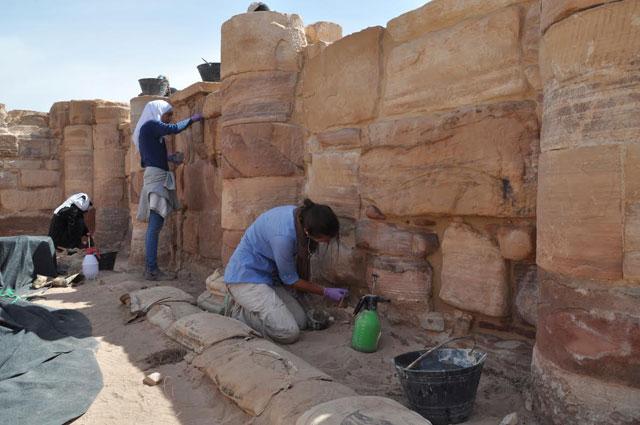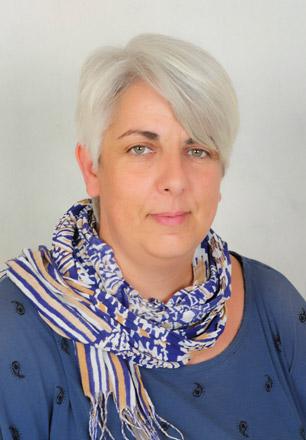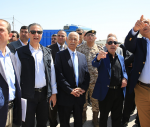You are here
Local communities key to preserving Kingdom’s heritage, scholar says
By Saeb Rawashdeh - Mar 09,2017 - Last updated at Mar 09,2017

The Temple of the Winged Lions Cultural Resource Management Initiative in Petra seeks to involve the local community in the site’s conservation (Photo courtesy of Glenn Corbett)
AMMAN — Archaeological work in Jordan must place local communities at the heart of conservation and protection efforts, a researcher with over 16 years of experience in the Kingdom has said.
Glenn Corbett, the associate director of the American Centre of Oriental Research (ACOR) since 2014, is a specialist on Petra, the Nabataeans and the impact they had on Jordan 2,000 years ago.
Corbett’s “core responsibilities” on becoming ACOR’s associate director, he explained, included immediately becoming involved with the Temple of the Winged Lions Cultural Resource Management (TWLCRM) Initiative in Petra, some 235km south of Amman.
The project, launched in 2009 by archaeologist and former ACOR associate director Christopher Tuttle, is a collaboration between ACOR, the Department of Antiquities and the Petra Archaeological Park to preserve one of the ancient city’s most prominent but threatened heritage sites, the Temple of the Winged Lions.
One of the goals of the project, which Corbett co-directs with engineer Maria Elena Ronza, is to change the culture and nature of how archaeology is practiced in Jordan, particularly by involving members of Petra’s local communities in the preservation of the site.
Initial excavation of the Temple of the Winged Lions occurred between the early 1970s and the mid-2000s, while the current ACOR project is designed to “stabilise, conserve and restore the site’s architecture and surrounding landscape”, the archaeologist told The Jordan Times in a recent interview.
Corbett explained that the area “was negatively affected by the original excavation”, adding that the site has suffered serious deterioration over the decades due to both human and natural factors.
He noted that the nature of archaeology has changed, with the aim less to uncover new sites, and more to preserve what has already been uncovered.
“For archaeologists working in Jordan, archaeology is now much more about preservation and protection than excavation,” Corbett said.
“But perhaps our most important goal has been to involve Petra’s local communities in the site’s conservation, and the TWLCRM has trained more than 400 people and provided around 800 employment opportunities,” the scholar noted.
While most jobs are temporary, the idea is to train as many local technicians as possible in critical site management tasks, he underlined.
Moreover, the project hopes to change the way archaeologists engage with the community in Petra, by focusing less on short-term excavation projects that only hire locals for manual labour, and more on year-round programmes that focus on “local employment, training and educational opportunities in cultural resource management (CRM),” Corbett explained.
“I feel privileged to be part of a project that brings together both foreign specialists and local community members to work towards the same goals,” he said.
Since 2012, the TWLCRM has received financial and logistical support from the US Ambassadors Fund for Cultural Preservation, Royal Jordanian, and, more recently, the USAID Sustainable Cultural Heritage Through Engagement of Local Communities Project (SCHEP).
SCHEP is supporting the on-site training programmes of the project’s new local partner, Sela for Vocational Training and Protection of Cultural Heritage, a non-profit company established in 2015 by members of the TWLCRM local team.
The project has trained members of Petra’s local communities in “CRM vocational skills like documentation, conservation, excavation and landscape rehabilitation”, the expert said, underlining that “the project’s emphasis on local hiring, employment and training is now being institutionalised through our partnership with Sela”.
In addition, as part of its social engagement strategy, the TWLCRM plays “a more positive, constructive role within the broader local and Jordanian community, particularly regarding cultural heritage awareness and education”.
The education of local communities is crucial to the preservation and protection of Petra’s sites, the archaeologist stressed.
“To this end, the project regularly hosts school, youth and university groups on site to participate in hands-on learning activities... and, as of spring 2017, such experiential activities will be promoted and offered to tourists as well,” Corbett concluded.
Related Articles
AMMAN — Given the numerous threats facing archaeological and cultural heritage sites in Jordan and the region, whether from war, development
AMMAN — Being in direct touch with the population of Petra, an American anthropologist realised that they are "deeply emotionally connected
AMMAN — When she visited Jordan for the first time in 1996, Italian architect Maria Elena Ronza described her experience as “mind-blowing”.C


















